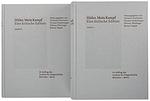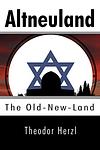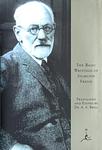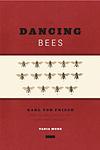The Greatest German "Austria" Books of All Time
Click to learn how this list is calculated.
This list represents a comprehensive and trusted collection of the greatest books. Developed through a specialized algorithm, it brings together 300 'best of' book lists to form a definitive guide to the world's most acclaimed books. For those interested in how these books are chosen, additional details can be found on the rankings page.
Genres
Countries
Date Range
Reading Statistics
Click the button below to see how many of these books you've read!
Download
If you're interested in downloading this list as a CSV file for use in a spreadsheet application, you can easily do so by clicking the button below. Please note that to ensure a manageable file size and faster download, the CSV will include details for only the first 500 books.
Download-
1. The Nibelungenlied by Anonymous
"The Nibelungenlied" is a Middle High German epic poem that narrates the story of dragon-slayer Siegfried at the court of the Burgundians, his murder, his wife Kriemhild's revenge, and the destruction of the Burgundians. The narrative is set in the early medieval period and combines elements of Norse mythology, courtly love, and heroic legend. The poem explores themes of honor, loyalty, love, betrayal, and revenge, and is considered one of the most important works of German literature.
-
2. Mein Kampf by Adolf Hitler
This book is a two-volume work written by a prominent dictator during his imprisonment in 1924. It outlines his political ideology and future plans for Germany, combining elements of autobiography with an exposition of his views on race, nationality, and governance. The author's main thesis is that the German-speaking 'Aryan' race is superior to all others, and that it is the duty of the state to preserve the purity of this race through policies of racial segregation, expansionism, and extermination. The book also contains detailed discussions on the author's hatred towards Jews, Marxism, and the parliamentary system.
-
3. Beethoven's Letters by Ludwig van Beethoven
This book offers an intimate glimpse into the personal life and inner world of one of classical music's greatest composers through a collection of his correspondence. Spanning from his early years in Bonn through his rise to fame in Vienna and until his death, the letters reveal his relationships with family, friends, and fellow artists, his struggles with hearing loss, and his insights into his creative process. They also reflect his financial worries, his search for love, and his passionate involvement with the political and cultural movements of his time. The letters are a testament to his enduring legacy and provide a deeper understanding of his music through the lens of his personal experiences and emotions.
-
4. Man Meets Dog by Konrad Lorenz
In "Man Meets Dog," the author explores the deep bond between humans and dogs, tracing the origins and development of this unique relationship. Through a combination of personal anecdotes and scientific insights, the book delves into various aspects of canine behavior, psychology, and the evolutionary factors that have shaped the human-dog partnership. The author, an eminent ethologist, uses his observations of his own dogs to illustrate broader themes about communication, affection, and the instinctual basis of domestication, offering readers a thoughtful reflection on why dogs hold such a special place in human society.
-
5. Altneuland by Theodor Herzl
The book is a seminal work of Zionist fiction that envisions the transformation of a future Jewish state in the land of Israel into a utopian society. It tells the story of two European Jews who, disillusioned with the anti-Semitism of the late 19th century, travel to Palestine and return 20 years later to find it has become a flourishing, modern society. The novel presents a vision of a multicultural, technologically advanced, and cooperative community where Jews live in peace, prosperity, and harmony with their neighbors. The narrative is a blend of social and political commentary, advocating for the establishment of a Jewish homeland through the power of innovative ideas and communal effort.
-
6. The Psychopathology Of Everyday Life by Sigmund Freud
The book explores the psychological underpinnings of seemingly trivial mistakes and forgetfulness in everyday life, such as slips of the tongue (often referred to as Freudian slips), forgetting names or words, and misplacing objects. The author argues that these errors are not mere accidents but rather manifestations of unconscious thoughts and desires that reveal much about the workings of the human mind. Through a series of engaging anecdotes and case studies, the book delves into the ways in which the subconscious mind influences behavior and sheds light on the deeper layers of human psychology that influence everyday actions and interactions.
-
7. The Dancing Bees by Karl von Frisch
"The Dancing Bees" is a fascinating exploration of the behavior and communication of bees, particularly focusing on the groundbreaking discovery of the bee dance language. The book delves into how bees use dance movements to communicate vital information about the location of food sources to their hive mates. Through meticulous observation and innovative experiments, the author unveils the complexity of bee communication and the remarkable precision with which bees can convey specific information about distance and direction. This work not only highlights the intricate social structure of bee colonies but also reflects on broader themes of animal intelligence and communication.
-
8. Character Analysis by Wilhelm Reich
"Character Analysis" is a seminal work in the field of psychoanalysis and therapy, where the author introduces a revolutionary theory explaining how psychoanalytic techniques can be used to systematically understand and address character structures. The book delves into the concept of character armor - the notion that an individual's character traits are defenses formed in response to various psychic conflicts, primarily rooted in sexual repression. By exploring the formation and function of these character defenses, the author aims to demonstrate how they can be dissolved through psychoanalytic intervention, leading to the release of emotional blockages and the enhancement of psychological well-being.
-
9. Psychopathia Sexualis by Richard von Krafft-Ebing
"Psychopathia Sexualis" is a seminal work in the field of sexual psychopathology that compiles numerous case studies of atypical sexual behaviors. Written in the late 19th century, the book categorizes and examines a wide range of sexual deviations and disorders, exploring their psychological and medical aspects. The author, a noted psychiatrist, uses clinical observations to argue that sexual deviance is often linked to mental disorders. This work significantly influenced both the medical and legal understanding of human sexuality at the time, contributing to the emerging fields of psychiatry and forensic pathology.
-
10. Ornament And Crime by Adolf Loos
"Ornament and Crime" is a collection of essays by an influential architect and critic who argues passionately against the use of ornamentation in art and architecture. He posits that the evolution of culture is synonymous with the removal of ornament from everyday objects, suggesting that the urge to decorate our buildings and possessions is a primitive impulse. The author asserts that the absence of ornament is a sign of spiritual strength and that modern individuals should embrace simplicity and economy in design. This work has had a profound impact on the development of modern architecture, advocating for a focus on functionality and purity of form.
-
11. The Strudlhof Steps by Heimito von Doderer
"The Strudlhof Steps" is a complex and layered novel set in Vienna, spanning from 1908 to 1951. It intricately weaves together the lives of its diverse cast of characters, centered around the eponymous staircase, a significant architectural landmark in the city. The narrative delves into the personal histories, relationships, and existential quests of these characters, capturing the social and political changes occurring through the years. With its rich detail and psychological depth, the novel provides a panoramic view of Viennese life across two World Wars, exploring themes of time, memory, and the human condition.
Reading Statistics
Click the button below to see how many of these books you've read!
Download
If you're interested in downloading this list as a CSV file for use in a spreadsheet application, you can easily do so by clicking the button below. Please note that to ensure a manageable file size and faster download, the CSV will include details for only the first 500 books.
Download









